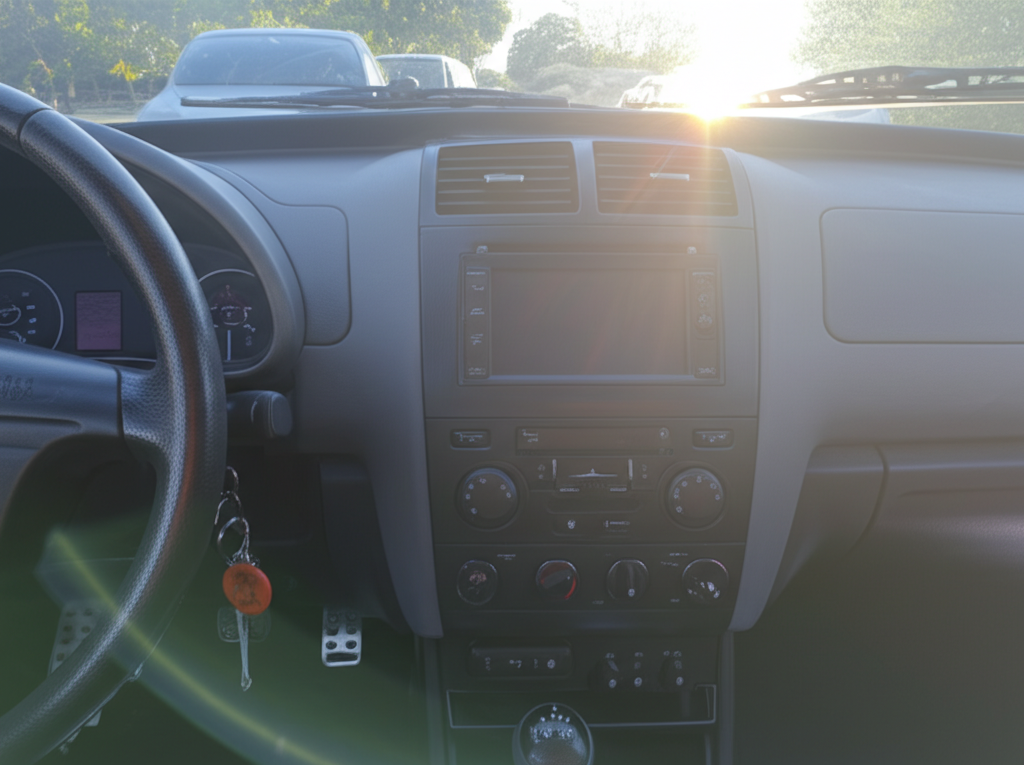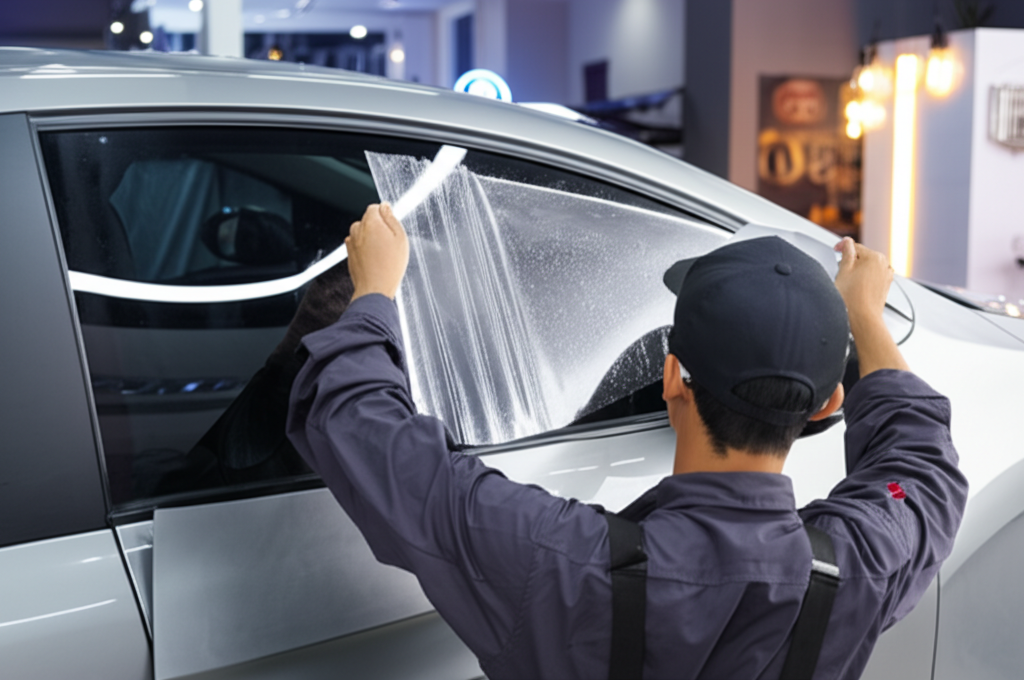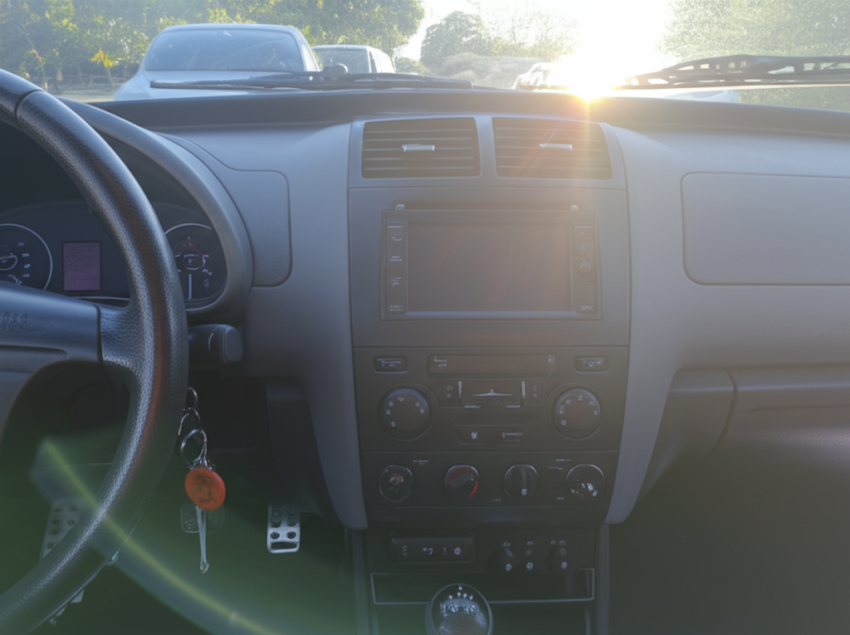We all know that feeling. You’ve left your car parked under the relentless Thai sun for just an hour, maybe while grabbing lunch or doing a quick shop. You return, open the door, and it hits you – a blast of air so hot it feels like opening an oven. The steering wheel is untouchable, the seats are scorching, and buckling the kids into their car seats becomes a sweaty, uncomfortable ordeal. In Thailand’s tropical climate, especially during the peak hot season, keeping your family car’s interior comfortable isn’t just a luxury; it’s a necessity for a pleasant journey. The heat doesn’t just make drives unpleasant; it can make children irritable, pets distressed, and even pose a safety risk with scalding surfaces. You find yourself cranking the air conditioning to its maximum setting, burning extra fuel and still waiting minutes before the cabin becomes bearable. This constant battle against the heat leads many family car owners to wonder: could window tinting be the simple solution we’re looking for?

Many hear about the benefits of automotive window film, particularly its heat rejection properties. But does it *actually* make a significant difference in the real world, especially under the intense sun of Bangkok, Chiang Mai, or Phuket? Is it worth the investment for someone primarily concerned with family comfort during daily commutes, school runs, and weekend trips? We decided to put it to the test.
The Transformation: Khun Somchai’s Family Honda City
Meet Khun Somchai, a father of two young children living in suburban Bangkok. His daily routine involves driving his Honda City for the school run, commuting to work, and weekend family outings. Like many Thai drivers, his biggest complaint during the hot season was the unbearable interior temperature of his car after it sat parked. “Every afternoon, picking up the kids was stressful,” Somchai shares. “They’d complain about the heat immediately, the baby seat buckle would be hot, and the AC took forever to cool the car down. We dreaded getting into the car.”
Frustrated, Somchai decided to investigate window tinting solutions focused specifically on heat rejection. After some research and consultation, he opted for a high-quality ceramic window film known for its superior infrared (heat) blocking capabilities without being excessively dark, ensuring good visibility for safe driving, day and night. The installation process was straightforward, taking just a few hours at a professional tinting center. They carefully cleaned the windows, precisely cut the film to size, applied it smoothly, and ensured there were no bubbles or imperfections.

The difference, Somchai reports, was immediate and remarkable. “The very next day, I noticed it wasn’t nearly as stifling inside when I first opened the door. The dashboard and seats were noticeably cooler to the touch.” He even performed a simple test using a basic thermometer. “Before the tint, on a sunny afternoon, my dashboard surface could easily reach over 65-70°C. After installing the ceramic tint, under similar conditions, the temperature was significantly lower, usually staying below 55°C. It’s not just about the peak temperature, though,” he emphasizes. “The car cools down much faster with the AC now. We can get comfortable within a couple of minutes, instead of ten. The kids are happier, my wife is more relaxed, and honestly, driving is just more pleasant. The reduced glare is also a bonus I hadn’t fully appreciated before.” Somchai’s experience highlights how the right window tint transforms the daily driving experience from a sweaty chore into a comfortable journey.
Understanding Your Options: Not All Window Tints Are Created Equal
Khun Somchai’s success came from choosing the right type of film. When your primary goal is heat reduction and family comfort, understanding the differences between window tint technologies is crucial. Here’s a breakdown of common options available in the Thai market:
| Feature / Film Type | Primary Technology | Heat Rejection (IRR) | UV Blocking | Glare Reduction | Signal Interference (GPS/Mobile) | Estimated Lifespan | Relative Price | Best For |
|---|---|---|---|---|---|---|---|---|
| Dyed Film | Polyester film with dye | Low (5-15%) – Primarily absorbs heat, doesn’t reflect much IR | Good (Up to 99%) | Moderate | No | 2-5 Years (can fade/purple over time) | $ | Basic privacy and UV protection on a tight budget. Not ideal for significant heat reduction. |
| Metallized Film | Thin layers of metal particles | Good (35-60%) – Reflects heat | Excellent (Up to 99%) | Good (can be quite reflective/shiny) | Yes (Can interfere with radio, GPS, phone signals) | 5-10 Years (durable) | $$ | Effective heat reflection, durability. Less suitable if signal interference is a concern. |
| Carbon Film | Carbon particles infused in film | Good (40-70%) – Blocks IR heat without metal | Excellent (Up to 99%) | Good (matte finish) | No | 5-10+ Years (very durable, no fading) | $$$ | Good heat rejection, no signal issues, durable, non-reflective look. Great all-around value. |
| Ceramic Film | Non-conductive ceramic nanoparticles | Excellent (60-90%+) – Superior selective IR blocking | Excellent (Up to 99.9%) | Excellent (clear visibility) | No | 10+ Years (premium durability, no fading) | $$$$ | Maximum heat rejection and UV protection without compromising visibility or signals. Ideal for families prioritizing comfort and long-term performance. |
| No Tint | Plain Glass | Minimal (Glass absorbs some heat) | Low (Standard auto glass blocks some UV, but not all) | Low | No | N/A | N/A | Baseline – allows maximum heat and UV penetration. |
For family car owners in Thailand whose main concern is combating the heat, Carbon and especially Ceramic films are the most effective choices. While they represent a higher initial investment compared to basic dyed films, their significantly better heat rejection performance, durability, and lack of signal interference make them a worthwhile upgrade for long-term comfort and satisfaction.
Voices from the Driver’s Seat: What Other Parents Say
Khun Somchai isn’t alone in his positive experience. We spoke to other family car owners in Thailand who recently invested in quality window tinting:
“Before getting the ceramic tint, my black SUV felt like a furnace after sitting in the office car park all day. Now, the difference is night and day. The aircon cools the car down so quickly, and I don’t get that burning sensation from the sun on my arm while driving anymore. My daughter used to hate getting in the car after school – now she doesn’t complain at all!”
– Khun Pim, Toyota Fortuner owner, Bangkok
“I was skeptical about how much difference tint could really make, beyond just making the car look darker. I chose a good quality carbon film. The biggest change for me is the ambient temperature. It just feels less ‘oppressive’ inside, even before the AC kicks in fully. Plus, I feel better knowing the kids are protected from harsh UV rays on longer drives down to Hua Hin.”
– Ajarn David, Mazda CX-5 owner, Nonthaburi
“We have a baby, and keeping the car cool and comfortable is our top priority. We went for a premium ceramic tint. Yes, it was more expensive, but the peace of mind and the actual comfort level are worth every Baht. No more worrying about hot seatbelt buckles or a sweaty, unhappy baby on drives. It just makes family life easier.”
– Khun Siriporn, Honda HR-V owner, Chiang Mai
These stories echo a common theme: relief, increased comfort, and a sense that the investment directly improved their family’s well-being during car journeys.
Ready to Reclaim Your Comfort?
Stop dreading getting into your car during Thailand’s hottest months. Investing in quality window tinting, especially a high-performance Carbon or Ceramic film, is a proven way to significantly reduce interior heat, block harmful UV rays, decrease glare, and make every drive more comfortable for you and your loved ones. Experience faster cool-down times, less strain on your air conditioning system (potentially saving fuel!), and a more pleasant environment for every passenger.
Want to learn more about the best window tinting options for your specific car model and needs? Contact us today for a free consultation and quote.
📱 Want to learn more about car wrap & paint protection?
Feel free to reach us on LINE:

🌐 Official Website: https://tpuwraps.com
Frequently Asked Questions (FAQ)
- Q: Is window tinting legal in Thailand?
- A: Yes, window tinting is legal in Thailand, but there are regulations regarding darkness, particularly for the front windscreen and front side windows. Reputable installers are familiar with the current Vehicle Act regulations concerning Visible Light Transmission (VLT) percentages and will advise you on compliant options. Generally, very dark tints (limousine style) might not be legal on front windows.
- Q: Will dark window tint make it difficult to drive at night?
- A: This depends on the quality of the film and the level of darkness (VLT). High-quality films, even with good heat rejection, often maintain excellent optical clarity. Cheaper or excessively dark films can reduce night-time visibility. Ceramic films often offer the best balance – high heat rejection with minimal impact on visibility. It’s important to choose a VLT level you are comfortable and safe driving with at night. Most drivers find a medium tint (e.g., 40-60% VLT) on side/rear windows perfectly manageable.
- Q: How long does window tint installation take?
- A: Professional installation typically takes between 2 to 4 hours, depending on the vehicle size, type of film, and the installer’s workload. It’s a process that requires precision and a clean environment.
- Q: Will window tint damage my car windows or defroster lines?
- A: When installed professionally using quality film, window tint will not damage your glass. Experienced technicians know how to work around rear window defroster lines safely. Problems usually arise from poor installation techniques or low-quality films that can bubble, peel, or leave adhesive residue upon removal.
- Q: Does window tint interfere with GPS, mobile phone signals, or Easy Pass/M-Flow tags?
- A: This is a potential issue primarily with older metallized films, as the metal particles can reflect radio waves. Modern Carbon and Ceramic films are non-metallic and generally do not cause interference with GPS, Bluetooth, mobile phone signals, or electronic toll collection tags used in Thailand.
Invest in Comfort, Drive Happier
Surviving the Thai heat doesn’t mean enduring uncomfortable car journeys. As our real-world examples and comparisons show, choosing the right window tint is a practical and highly effective way to transform your family car into a cooler, more comfortable, and UV-protected haven. It’s more than just an aesthetic upgrade; it’s an investment in your family’s comfort, well-being, and overall driving pleasure.
Don’t let another scorching summer day make your car trips unbearable. Explore the benefits of modern window tinting technology and discover how much more enjoyable driving in Thailand can be. Take the step towards cooler commutes and happier family adventures today.
